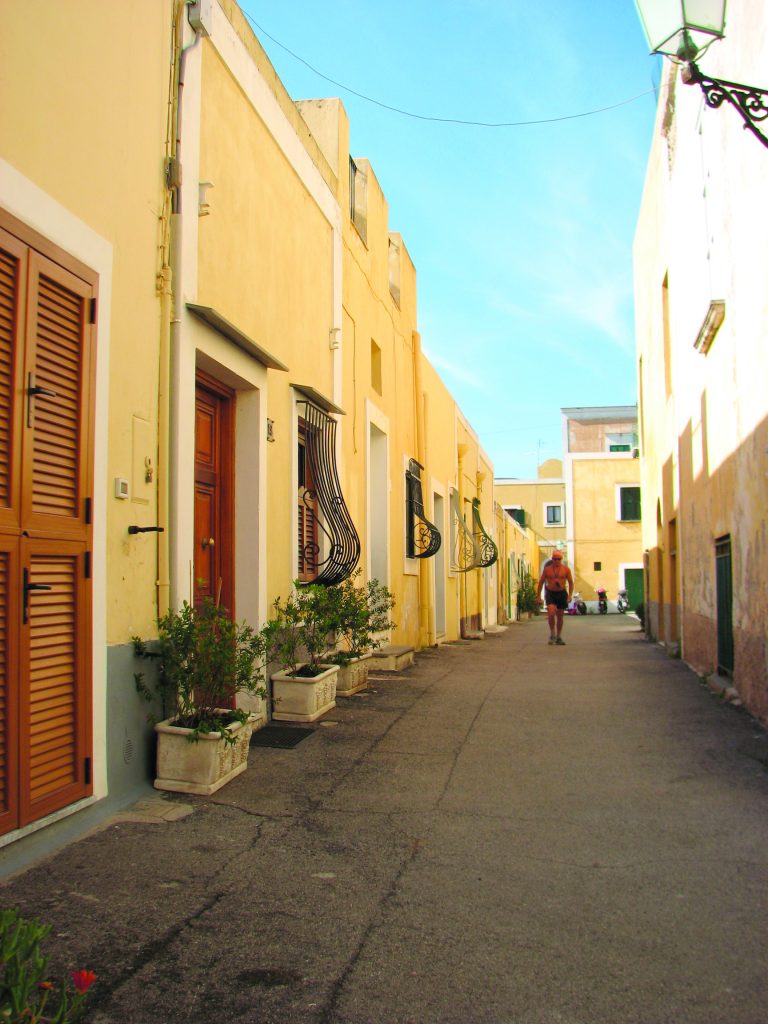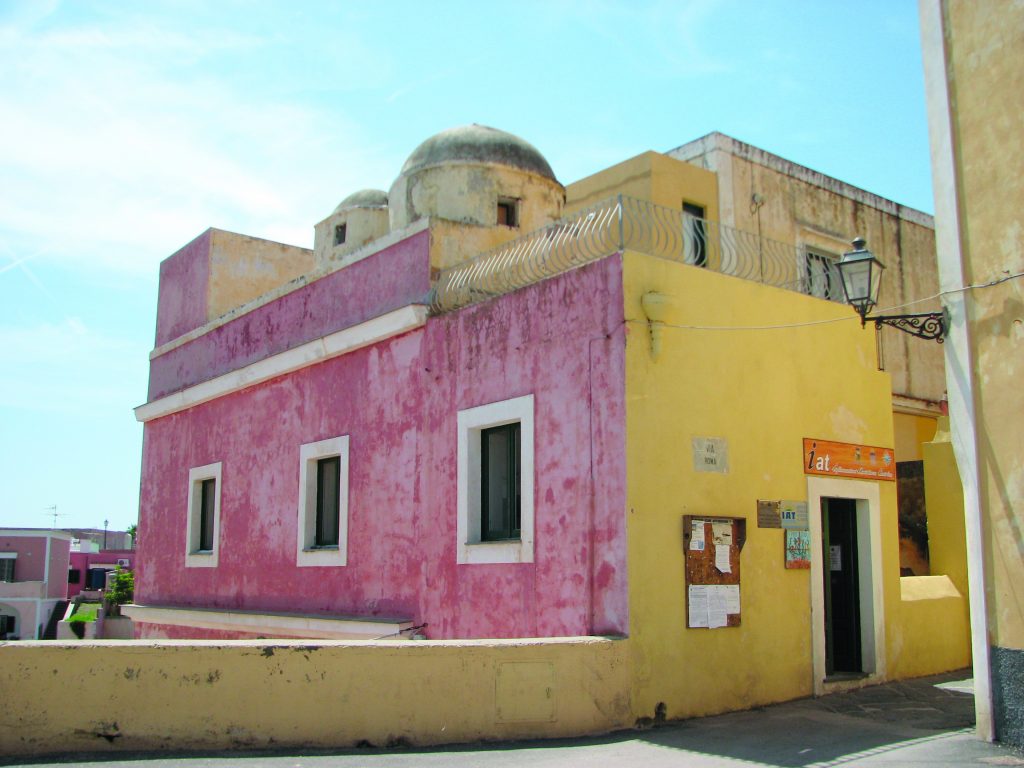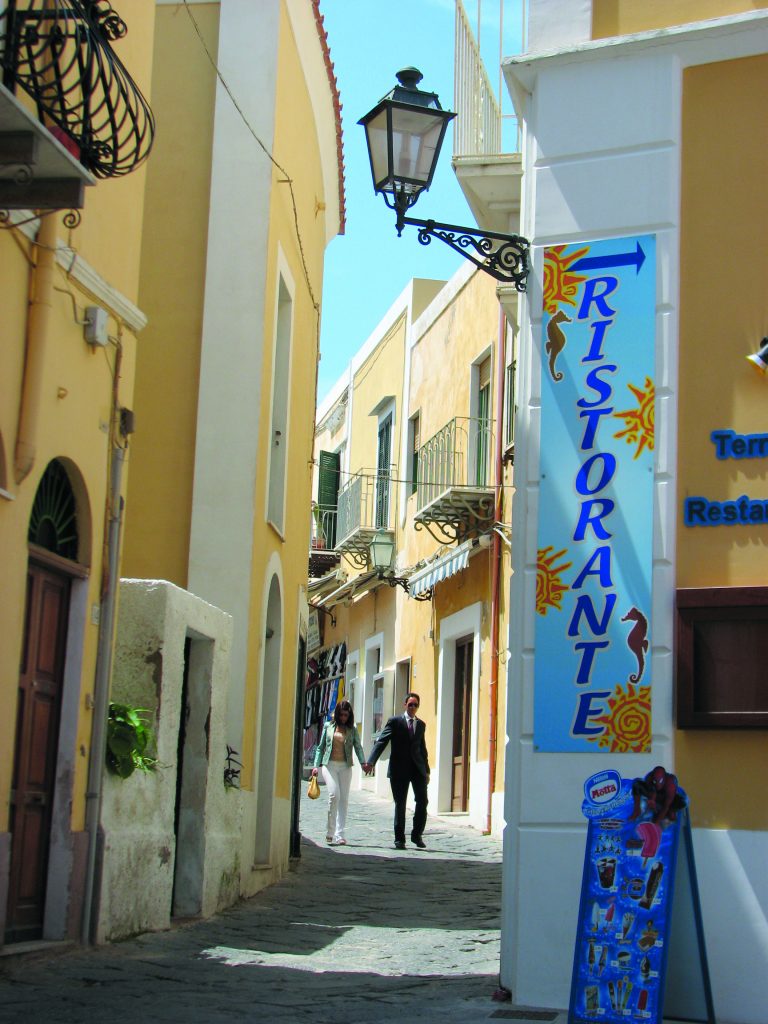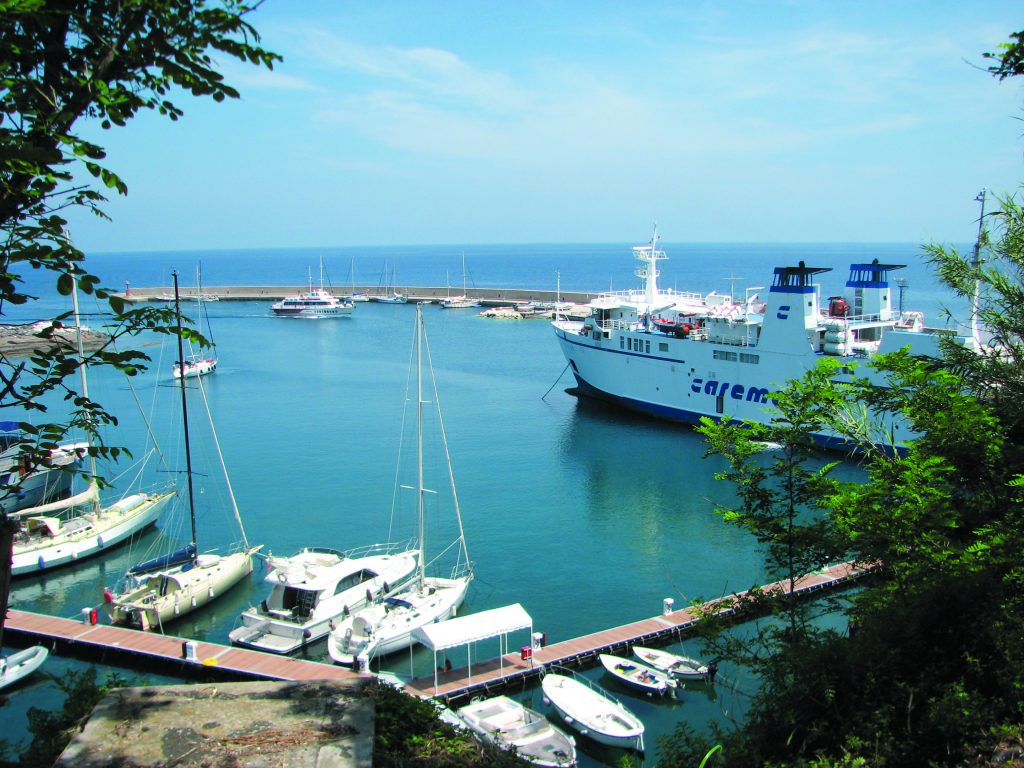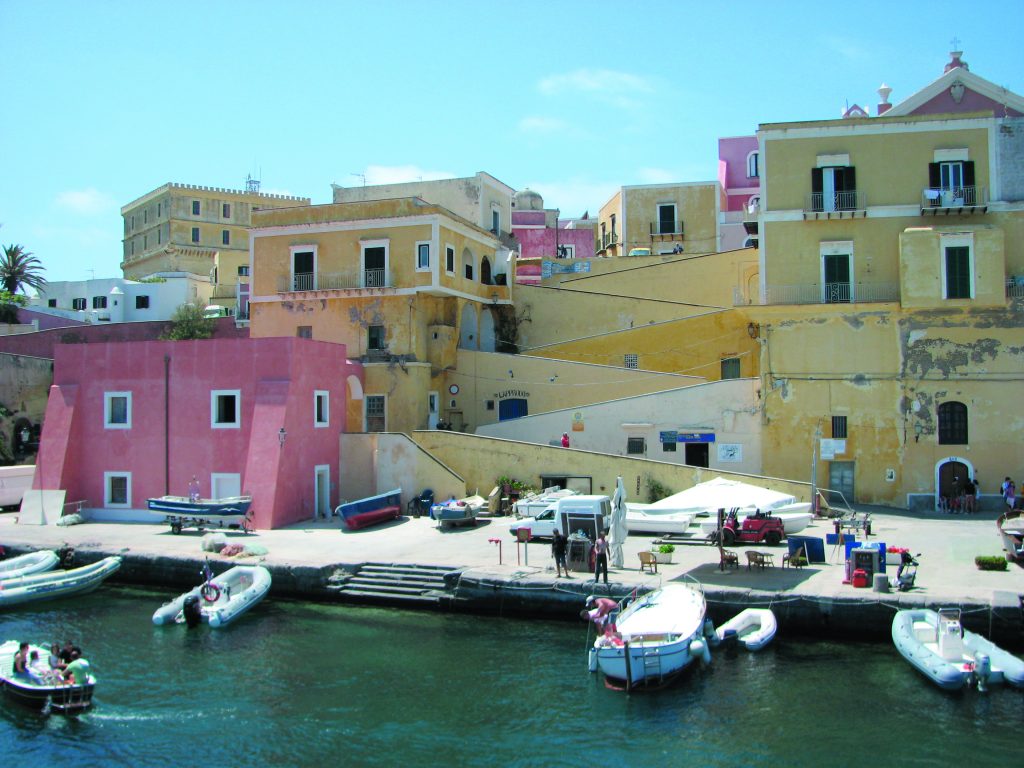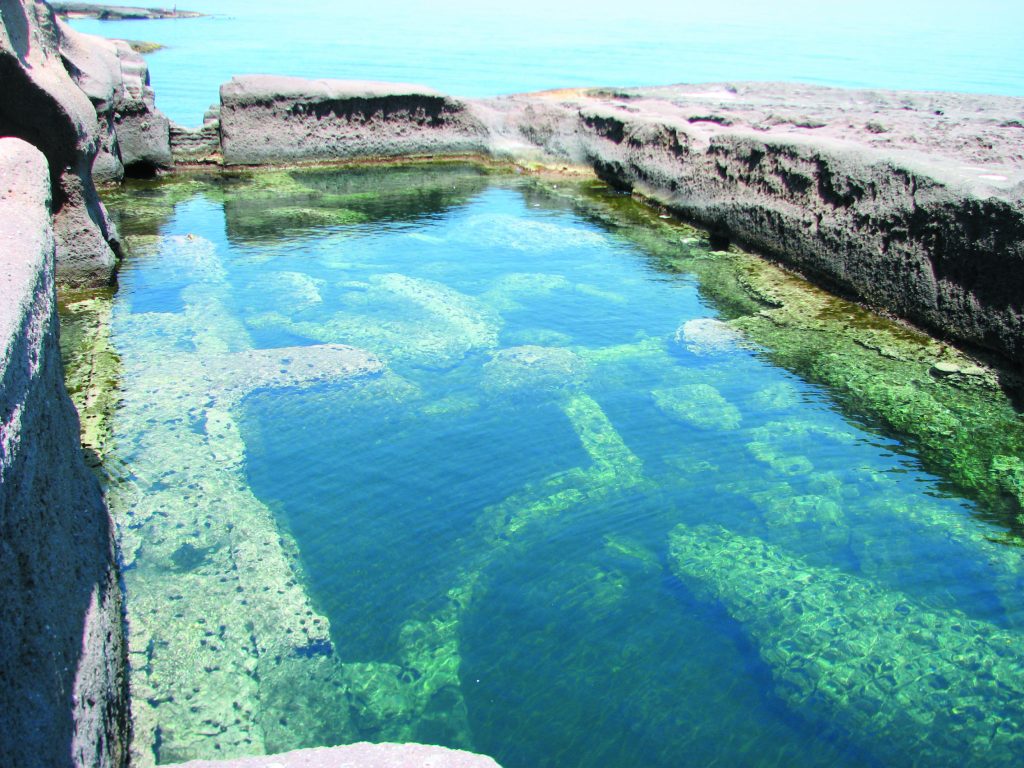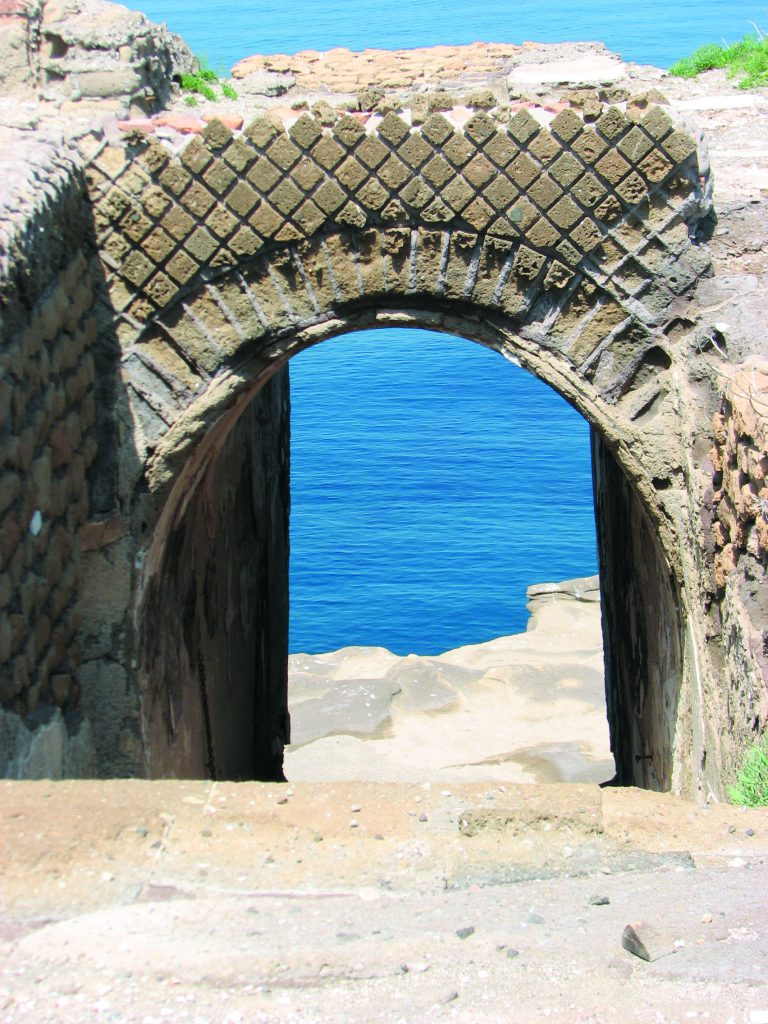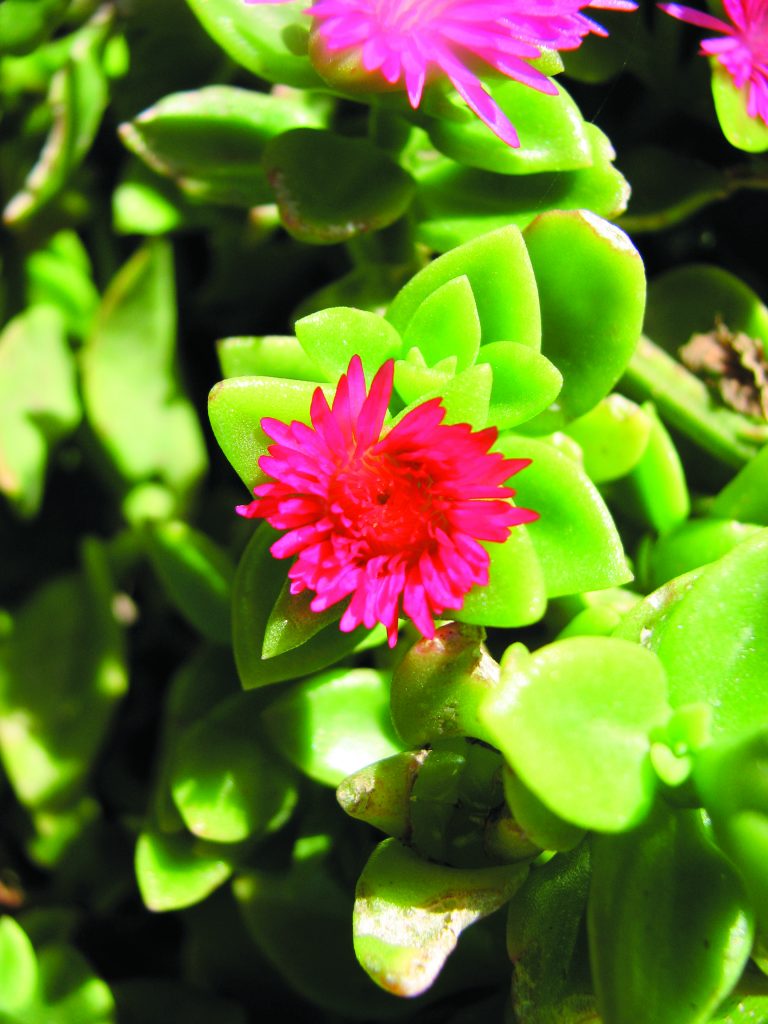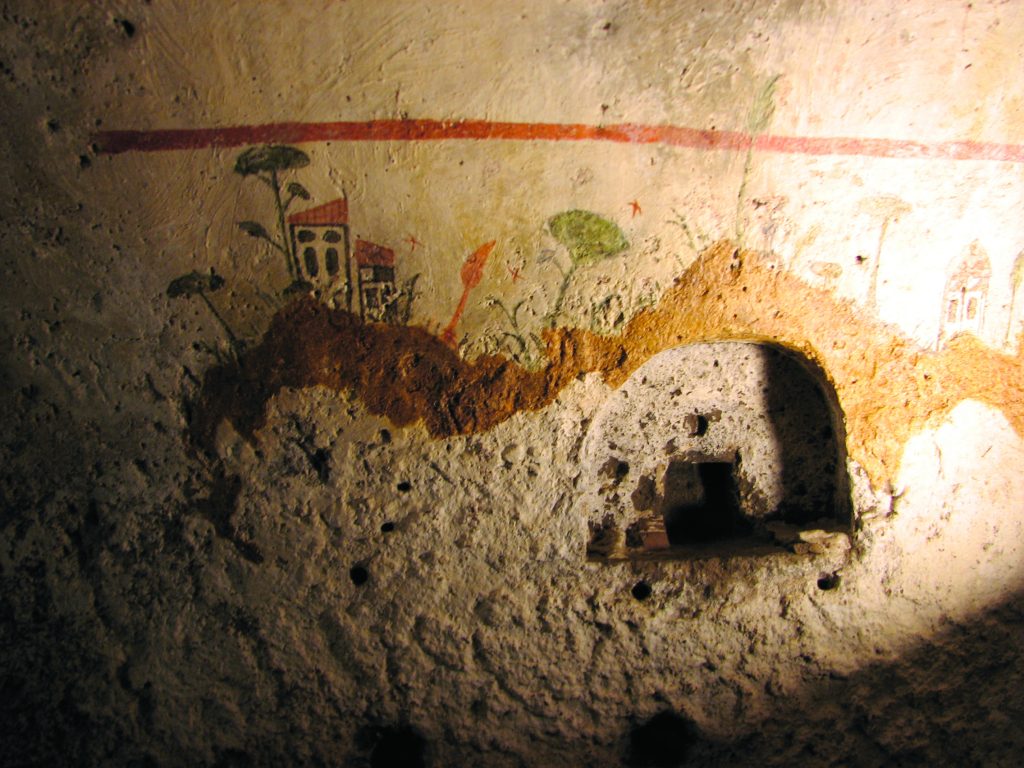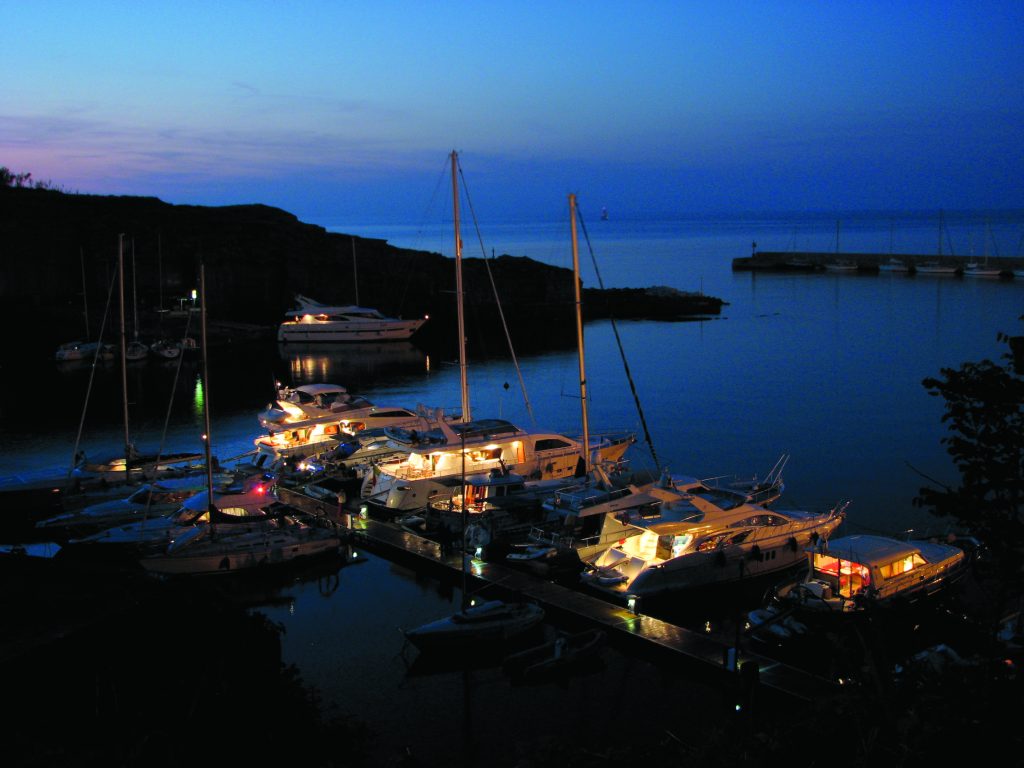A tiny island off Italy’s west coast hides in the shadows cast by its more popular neighbours, Ischia and Ponza. Sarah Lane finds out why Ventotene deserves a visit.
The island of Ventotene is one of Italy’s best kept secrets. It is officially part of the Ponza archipelago off the coast of southern Lazio, but in reality it is very much apart. Measuring a mere 2.8km by 900m, and with a permanent population of around 300, the island is a treasure trove for archaeologists, birdwatchers, divers and just about anyone in search of a terrific holiday.
Despite its role in numerous tragic and momentous historical events through the ages, and its current status as a protected natural and marine park, many Italians don’t even know of the island’s existence. The majority of today’s tourists come from the nearest areas on the mainland, around Rome and Naples. We first found out about Ventotene by chance. Beppe, the owner of our local Irish pub, originates from the island and told us about this very special place overfew pints one night.
I planned a trip with my partner Malaga as an out-of-season spring weekend. The easy and comfortable hydrofoil from Formia took about an hour. Nearing Ventotene I was struck by the whale-like shape of the island’s profile – the highest point is 139m above sea level at Punta dell’Arco, sloping gradually down to the sea at the village and port at the other end of the island. The proximity of tiny, uninhabited Santo Stefano is also noticeable – after so much open sea, these two islands seem to cling to one another for moral support.
Ventotene, referred to by Homer as Isle of the Sirens, has changed names even more often than it has changed hands. The Romans used to call it Pandataria, from the Greek for ‘dispenser of all things’, owing to the island’s rich terrain, and over the centuries this has evolved into Ventotene, the reference to wind – vento – being no coincidence. When it blows, it really blows and sailing schools ply their trade teaching children and adults how to rein in this noble element.
At our hotel we received a warm welcome from the owner, Tonino. Hotel Smeraldo has grown up around the house where Tonino was born and, although he hasn’t travelled far in terms of mileage, he has come a long way in that he is currently deputy mayor of Ventotene. After accepting a bunch of aromatic herbs for our room, from the hotel garden, we changed and went exploring.
Breathing in the heady, uncontaminated sea air, and drawn by the pull of the clear blue water, we made our way straight back to Porto Romano. It’s amazing to think that this cleverly planned port was carved out of the porous tufa stone over 2,000 years ago, in 29BC. Around 60,000sqm of rock were removed by the ancient Romans to create the port, as efficient nowadays as it ever was, with passages and canals to protect the boats from tides and deposits of sand. The picturesque portside is bustling with fishing boats, dive centres, boat hires and bars, making good use of the ancient warehouses carved into the rock face.
Roman influences
Strolling by the outer harbour wall to see the pock-marked rocks (saline) – shallow bowls created by the Romans for collecting sea salt – you get a fantastic view of the pastel-coloured backdrop. The village behind the port wasn’t built up until the mid-18th century, when the Bourbons, based in Naples, were in charge.
The harmony that architects Antonio Winspeare and Francesco Carpi managed to achieve between the lazy zig-zag ramp they made up the slope and the Roman port itself is extraordinary. A little further round, il Pozzillo, a side channel created by the Romans for mooring and dry docks, is overlooked by tiered buildings that are strongly reminiscent of a bourgeois, 18th-century theatre. Nowadays, a wonderful waterside restaurant, Da Benito, takes centre stage here.
At the other end of a cavernous tunnel carved through the rock from Pozzillo, we reached Cala Nave, one of the island’s main beaches, with its black volcanic sand. Wide beaches are not in abundance on Ventotene as steep cliffs rise sheerly from the sea almost all around the island. This lack of easy access to the water explains why the islanders were traditionally farmers rather than fishermen and, still today, the majority of the local specialities are vegetable-based rather than seafood, the local lentils being the main claim to fame food-wise.
Strolling back round the headland, we came to another Roman marvel – the ancient fish farm (peshciera). A complex design of pools mixing salt and fresh water, with a system of gates and filters to ensure water flows but keeping the fish enclosed, meant the Romans had a constant supply of delicious fresh fish. We watched from above as a couple of divers explored the ancient underwater architecture.
The island’s destiny during Roman times was to be a place of exile for a succession of women of imperial standing, banished here by their husbands, brothers or fathers for reasons such as infidelity, immorality and Christianity. The first of these women was Giulia, daughter of Emperor Augustus (63BC-AD14).
The island’s main archaeological site is actually Villa Giulia, named in her honour. Ironically, Giulia had originally asked for the residence to be built as a holiday home, but she became the first victim of her father’s Lex Iulia, a law brought in to eradicate immorality, and found herself confined on the island for several years. The background to this exile is a complex saga of murders, revenge and ambition, initiated by Lidia, mother of Emperor Tiberius (AD14-AD37), and both step-mother and mother-in-law to Giulia herself.
A life in exile
Life at the villa couldn’t have been too harsh. The huge complex, built in a commanding position on Punto Eolo, was divided into sections centred around the imperial residence, of which little now remains, due to quarrying and natural landslides. You can see more of the slave and guard quarters and the steps down to the sea and the spa and relaxation area.
After Giulia, it was the turn of her daughter, Agrippina the Elder, to face exile on Ventotene, once again for immoral behaviour. Next, a couple of other eminent Roman women were sent here for similar reasons, before the series culminated with Flavia Domitilla, granddaughter of Emperor Vespasian, being exiled for her religious beliefs. We visited the site of Villa Giulia with local guide Elena, who, along with her brother Salvatore, knows all there is to know about the island’s history and culture.
Walking towards the end of the island, between exotic hedgerows of agaves, prickly pears, bamboo, bougainvillaea and other such lush vegetation, we had our binoculars at the ready. Ventotene, gradually being discovered as a holiday destination by humans, is already a well established and popular stopover for birds.
Feathered friends
The island is positioned in the flight path of many migratory species, and the sheer number of birds that you can see here during the spring or autumn migrations is amazing. There is an important ringing and observation centre here, with a small museum explaining the phenomenon. We saw too many varieties for amateurs like us to hope to identify, but they included colourful hoopoes and bee-eaters as well as falcons and vast numbers of resident sea birds.
But times have changed. Birds that were once caught in nets on Ventotene for the dinner table, are now destined for the measuring and ringing room. Parata Grande, an attractive west-facing bay, with a long flight of steps down to the beach, was one of the major areas frequented by bird hunters. The practice is banned nowadays, as is unauthorised fishing in the waters around the island.
We stopped at Parata Grande to take in the fantastic sight of the sun setting over the water, lighting up the cliff with a rich red glow. Parched after all the day’s cultural and natural marvels, we were overjoyed to find a little bar overlooking the marina, on the way back to the village, and quenched our thirst while watching the lights on the handful of yachts moored below.
The next morning we set out early to meet up with Ugo, the boatman, for a trip around the island. This is a must – from the sea you get to see the beautiful patterns of rock around the island, as well as fascinating features such as hidden lookout towers and ancient tombs carved into the cliff face that you just wouldn’t see otherwise. Ugo told us where turtles, dolphins and even whales are sometimes seen, and he was genuinely excited when we saw the first gull chick of the season, and he pointed out another gull that had been nesting on an isolated rock for over a month with a fondness that was almost paternal.
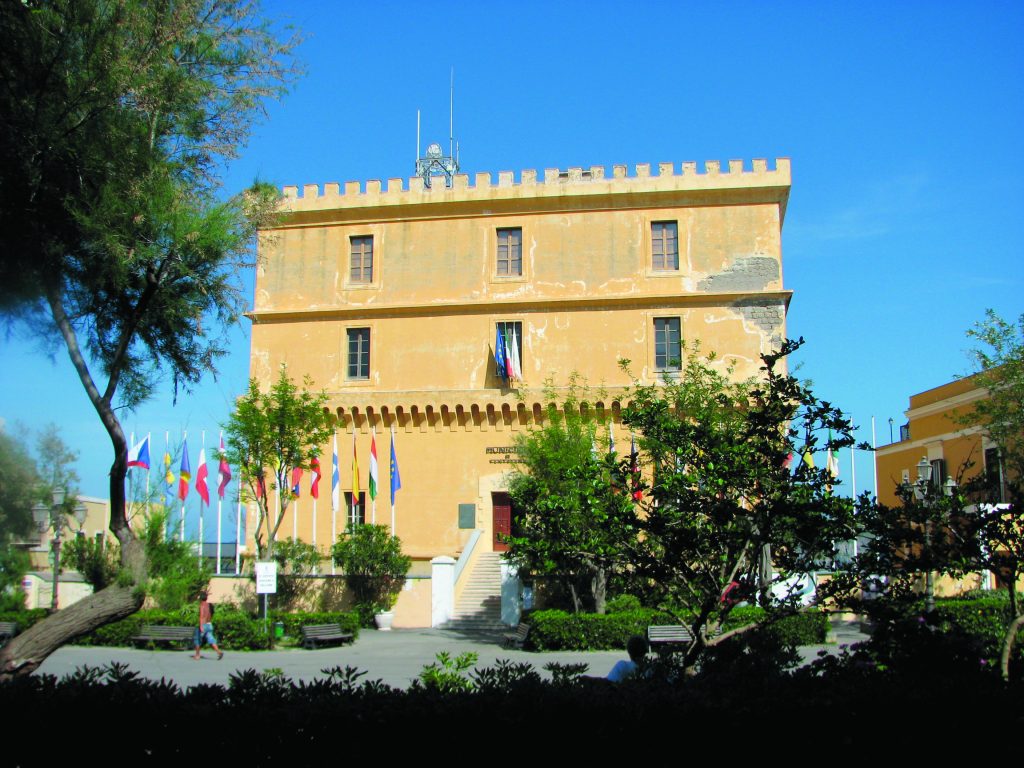
Back at the Roman port, after buying breakfast at the Forno Aiello bakery – a local institution – we stopped for a coffee in the main square. Piazza Castello is dominated by Forte Torre, a solid yellow fortress installed for defence purposes, now home to the local museum. Pirates, particularly Saracens, were unwelcome but active visitors to the Italian coasts for a long time. The sight of a black cat would strike terror into the hearts of island or coastal dwellers, as these feline companions were usually the first to disembark. In Italy black cats are considered bad luck. Fortunately, most of the cats we met on Ventotene were white or tabby.
Roman waterworks
By now it was time to set off to discover yet another of ancient Rome’s incredible legacies on the island – the Cisterna dei Detenuti. Elena came to guide us around the huge underground chambers and tunnels that were carved out of the rock a couple of thousand years ago. The cistern was part of an efficient system for collecting rainwater to render the island self-sufficient. As ever, the Romans were far ahead of us. Nowadays, water is delivered by boat, as the island lacks any sources of fresh water.
The rainwater used to be collected in cisterns and delivered to the villas at the lower end of the island via underground aqueducts, making use of the land’s natural slope. During the 18th century, this dried out cistern was the living quarters for the 100 prisoners drafted in to carry out the building work on the village, and there are some fascinating drawings and writings still to be seen on the walls dating from this time.
In more recent history, during the fascist period, the island was again home to prisoners, this time confined for political beliefs. It was here that Altiero Spinelli and others drew up the Ventotene Manifesto, setting out the idea of a united Europe. The manifesto was smuggled out (in a bra of all things) and taken round Europe to be signed by various heads of state – a precursor of the European Union.
As Malaga and I sat over a cool beer at the port-side bar, waiting for the hydrofoil to take us back to the mainland, we pondered over the incredible atmosphere of the island. There are so many layers to Ventotene – the complex history, the archaeology and architecture, and the rich natural heritage both on the land and in the surrounding sea – but it seems to us that it’s the great respect and pride the locals have in their island that makes it such a special place.

